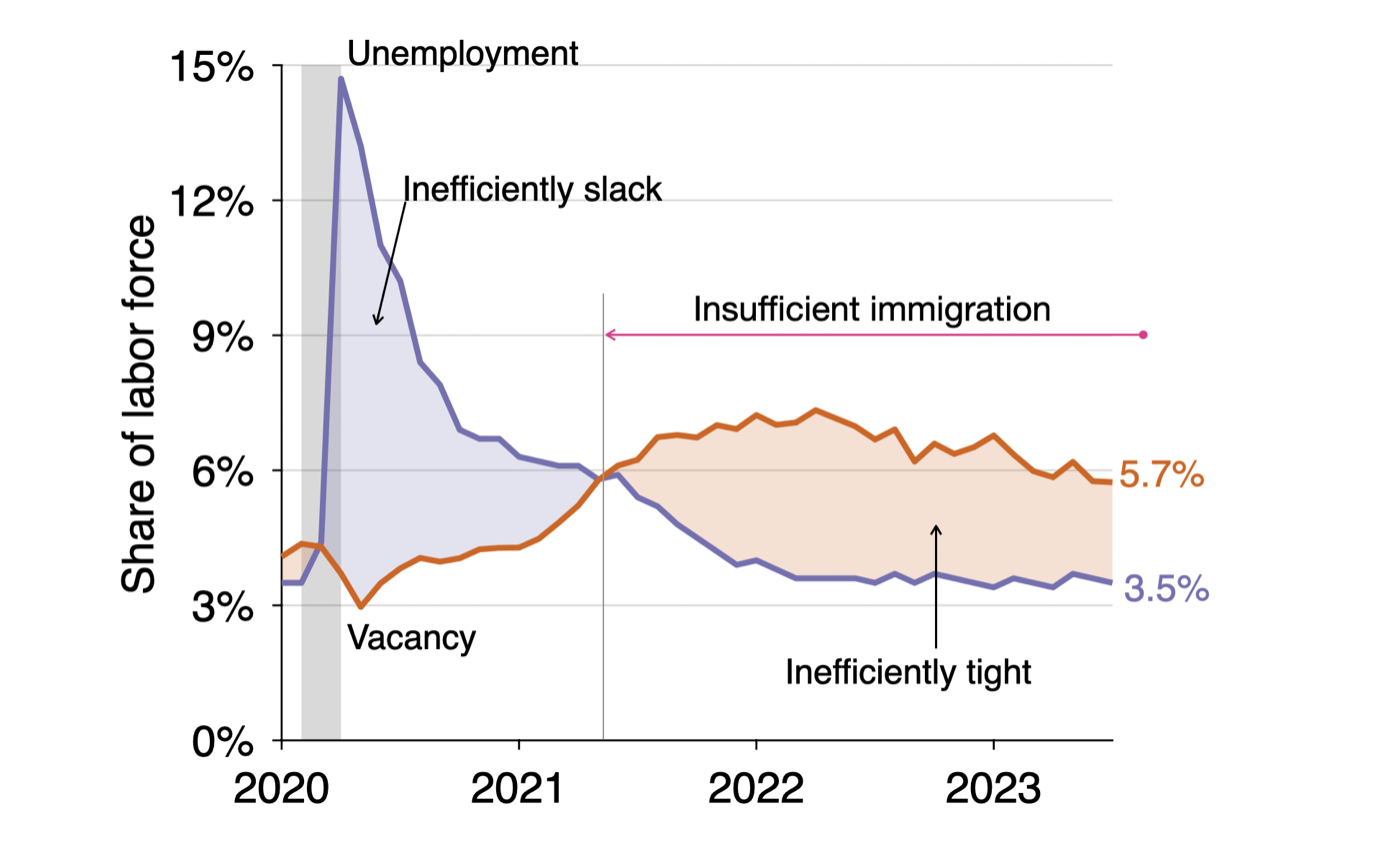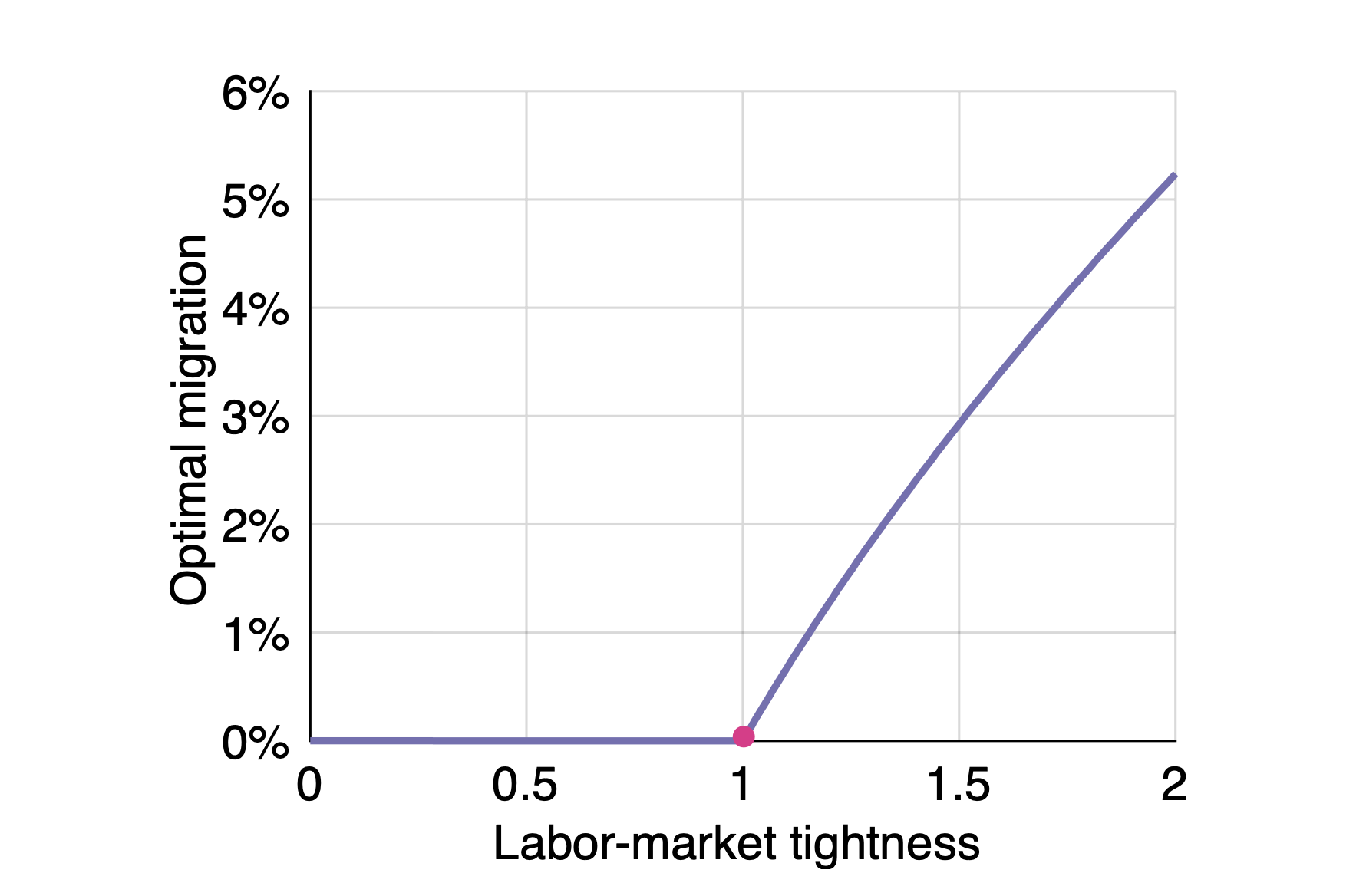Abstract
Immigration is often blamed for increasing unemployment among local workers. This sentiment is reflected in the rise of anti-immigration parties and policies in Western democracies. And in fact, numerous studies estimate that in the short run, the arrival of new workers in a labor market raises the unemployment rate of local workers. Yet, standard migration models, such as the Walrasian model and the Diamond-Mortensen-Pissarides model, inherently assume that immigrants are absorbed into the labor market without affecting local unemployment. This paper presents a more general model of migration that allows for the possibility that not only the wages but also the unemployment rate of local workers may be affected by the arrival of newcomers. This extension is essential to capture the full range of potential impacts of labor migration on labor markets. The model blends a matching framework with job rationing. In it, the arrival of new workers raises the unemployment rate among local workers, particularly in a depressed labor market where job opportunities are limited. On the positive side, in-migration helps firms fill vacancies more easily, boosting their profits. The overall impact of in-migration on local welfare varies with labor market conditions: in-migration reduces welfare when the labor market is inefficiently slack, but it enhances welfare when the labor market is inefficiently tight.
Figure 8A: Small reduction in local employment after in-migration in good times

Figure 8B: Larger reduction in local employment after in-migration in bad times

Figure 9E: Migration-induced unemployment over the business cycle

Figure 10C: Optimal in-migration over the business cycle, as a share of labor force

Citation
Michaillat, Pascal. 2024. “Modeling Migration-Induced Unemployment.” arXiv:2303.13319v5. https://doi.org/10.48550/arXiv.2303.13319.
@techreport{M24,
author = {Pascal Michaillat},
year = {2024},
title = {Modeling Migration-Induced Unemployment},
number = {arXiv:2303.13319v5},
url = {https://doi.org/10.48550/arXiv.2303.13319}}